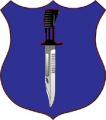"Orient-Observe-Reorient-catalog-Decide-Act"
As soon as you reorient, you've started the cycle over again. The one issue I have with the OODA Loop - and I talked with Lind about this, because I thought it nullified the OODA Loop - was what happens when things happen so slowly that you are spinning around in your own OODA Loop that you become disoriented. I think that's a real problem, as Eden stated - these kinds of wars move glacially.
If we can't orient properly, the OODA Loop is useless.












Bookmarks